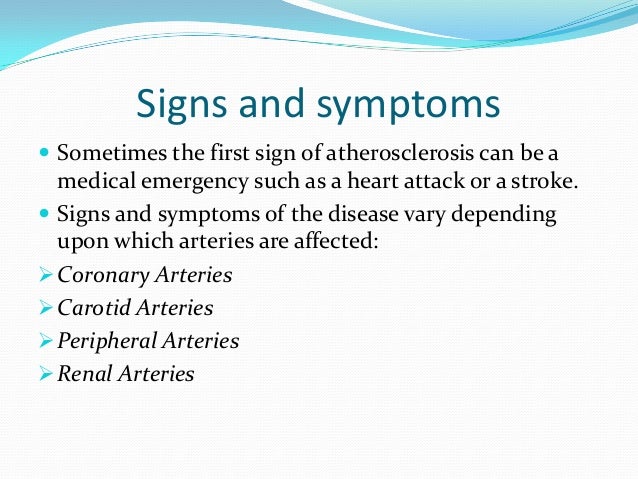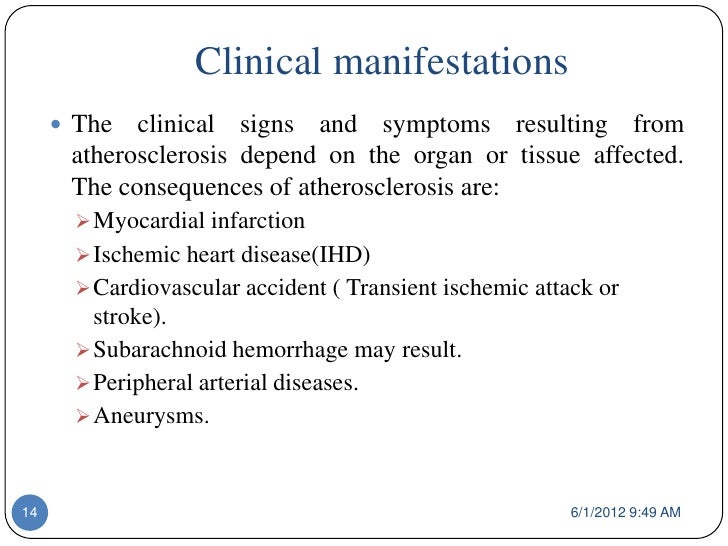 However, while this disease has a relatively small number of signs to look for, there are a few key identifiers, that might indicate the presence of atherosclerosis. Yet, it is important to remember that each sign and symptom is different according to the affected artery. One symptom that many people experience in relation to coronary arteries is angina. Angina is a pain or discomfort that takes place in the chest when the heart is not receiving an adequate amount of blood. Someone experiencing this symptom may feel a tight pressure in the pleural cavity. This pressure can also extend through one's shoulders, arms, neck, jaw or back, and can be triggered by emotional stress and physical activity, or relieved with rest. Additional symptoms of coronary heart disease (CHD) include shortness of breath and arrhythmia.
However, while this disease has a relatively small number of signs to look for, there are a few key identifiers, that might indicate the presence of atherosclerosis. Yet, it is important to remember that each sign and symptom is different according to the affected artery. One symptom that many people experience in relation to coronary arteries is angina. Angina is a pain or discomfort that takes place in the chest when the heart is not receiving an adequate amount of blood. Someone experiencing this symptom may feel a tight pressure in the pleural cavity. This pressure can also extend through one's shoulders, arms, neck, jaw or back, and can be triggered by emotional stress and physical activity, or relieved with rest. Additional symptoms of coronary heart disease (CHD) include shortness of breath and arrhythmia.  Another primary location for atherosclerosis is the carotid arteries. Blockage of these arteries prevents the flow of oxygen-rich blood to the brain and can cause a stroke. Symptoms and signs of carotid artery disease include sudden weakness, paralysis or numbness in one half of the body, confusion, trouble speaking and understanding, dizziness, loss of balance and coordination, as well as difficulty breathing.
Another primary location for atherosclerosis is the carotid arteries. Blockage of these arteries prevents the flow of oxygen-rich blood to the brain and can cause a stroke. Symptoms and signs of carotid artery disease include sudden weakness, paralysis or numbness in one half of the body, confusion, trouble speaking and understanding, dizziness, loss of balance and coordination, as well as difficulty breathing.Finally, plaque buildup can occur in the peripheral and renal arteries. Peripheral arteries are the arteries leading to legs, arms and pelvis. Numbness and pain are the primary symptoms of peripheral arterial disease, and while blockage of these arteries is not as severe, understanding the symptoms is important nonetheless. Blockage to the renal arteries can result in chronic kidney disease which can lead to decreased kidney function. Initially, there is no way to determine whether or not someone has chronic kidney disease. However, with time people see changes in their urination patterns, loss of appetite, nausea and swelling in the hands or feet.
http://www.mayoclinic.org/diseases-conditions/arteriosclerosis-atherosclerosis/basics/symptoms/con-20026972

No comments:
Post a Comment